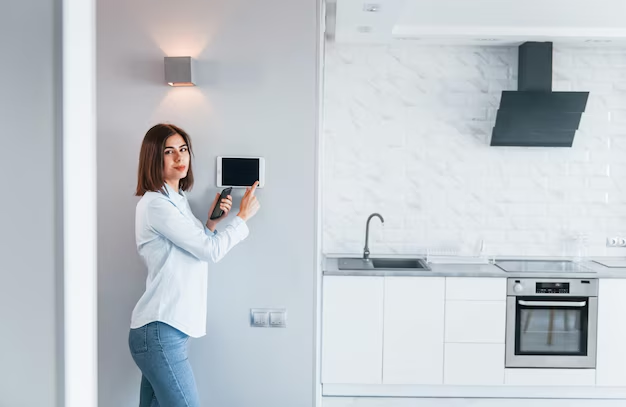How Long Does It Take for a New Refrigerator to Cool Down? Everything You Need to Know
Getting a new refrigerator is an exciting experience for anyone looking to revamp their kitchen or simply enhance their food storage capabilities. However, one common question that arises is how long it will take for a brand-new refrigerator to reach optimal cooling temperatures. In this comprehensive guide, we will explore this topic and provide insights to ensure your new appliance is set up for success.
🧊 Understanding the Cooling Process
Before we dive into specifics, it’s critical to understand how refrigerators work. Refrigerators remove heat from the inside and expel it externally, keeping your food and drinks cold. This is achieved through a combination of components like the compressor, evaporator coil, and refrigerant. When setting up a new refrigerator, patience is key as the appliance transitions from room temperature to its optimal cooling state.
Factors Influencing Cooling Time
Several factors can affect how long it takes for your new refrigerator to cool down:
- Size and Type: Compact models may cool faster than larger ones.
- Brand and Model: Different designs and technologies can influence cooling efficiency.
- Ambient Temperature: If the surrounding environment is warm, the appliance might take longer to cool.
- Initial Contents: An empty refrigerator can cool faster, but adding items in batches can help stabilize the temperature.
⏰ The Expected Time Frame
General Cooling Guidelines
Most new refrigerators typically take anywhere from 12 to 24 hours to reach an optimal temperature. While some models might cool faster, it’s generally advisable not to rush this process as every unit has its unique build and specifications.
When Can It Take Longer?
Certain circumstances can prolong cooling times:
- Door Openings: Frequently opening the door lets warm air in, delaying the cooling process.
- Initial Setup Errors: Incorrect temperature settings during setup can impact efficiency.
- Environment and Installation: Constricting the airflow around the refrigerator by placing it too close to the wall can disrupt functionality.
Recommended Temperatures
To ensure food safety, your refrigerator should ideally maintain a temperature between 37°F (3°C) and 40°F (4°C), while the freezer should be at 0°F (-18°C).
📋 Practical Tips for Quick Cooling
To expedite the cooling process, consider these practical tips:
- Allow Air Circulation: Ensure there’s adequate space around the refrigerator for airflow.
- Avoid Frequent Openings: Minimize door openings until the ideal temperature is reached.
- Proper Setup: Verify that the temperature controls are correctly adjusted as per the manual.
- Gradual Stocking: Add items in small batches to prevent overwhelming the cooling system.
Preventing Overload
Overloading can hinder efficiency. Introduce contents gradually and allow space for air circulation between items.
Quick Reference Checklist 📝
- 💨 Space Optimization: Ensure 2-3 inches of space on all sides.
- ❄️ Initial Temperature Setting: Refer to the user manual for optimal settings.
- ⏳ Time Patience: Wait at least 12 hours before assessing cooling performance.
- 🚪 Limit Openings: Keep door action to a minimum for quick cooling.
🔍 Delving Deeper: Understanding Your Refrigerator's Needs
Ensuring Energy Efficiency
To maximize long-term efficiency, consider these additional practices:
- Regular Maintenance: Clean coils and check seals regularly.
- Smart Temperature: Avoid setting temperatures colder than necessary.
Long-Term Storage Practices
Once your refrigerator is set up, developing good storage habits can extend food shelf life:
- Organization: Use bins or organizers to separate food items.
- Labeling: Keep track of purchase dates and expiration to reduce waste.
- Safety First: Store raw meats on lower shelves to prevent cross-contamination.
Common Concerns and Solutions
Why Isn’t My Refrigerator Cooling Properly?
If your refrigerator isn't cooling as expected even after the suggested timeframe, consider these solutions:
- Check Power Supply: Ensure the unit is plugged in correctly.
- Inspect Door Seals: Damaged seals can lead to temperature fluctuations.
- Examine Vents and Coils: Blocked vents can restrict airflow and reduce cooling efficiency.
Should You Contact a Professional?
If basic troubleshooting doesn't resolve issues, it may be time to contact a professional for a thorough inspection and maintenance check to ensure everything is functioning well.
Summary Table 🌟
| Concern | Quick Tip |
|---|---|
| Not Cooling | Check power and door seals |
| Persistent Warm Spots | Examine vent blockages and internal air circulation |
| High Energy Usage | Inspect coils, settings, and perform regular upkeep |
| Noise Issues | Identify source, ensure stable positioning |
Ensuring a Smooth Transition to Your New Appliance
Your new refrigerator is a significant investment in your home and daily life. Setting it up correctly and with care ensures that it will efficiently serve your needs, keeping food fresher for longer. Embrace patience as the unit gradually settles into its optimal cooling rhythm and employ smart practices to maintain its performance.
Remember, a proactive approach in terms of setup and maintenance can substantially improve the longevity and efficiency of your refrigerator, providing peace of mind and reliable cold storage for your household essentials.
By thoughtfully considering the information provided, you can enjoy the benefits of your new refrigerator with confidence, ensuring it becomes a dependable cornerstone in your kitchen.
